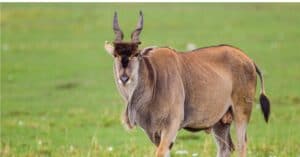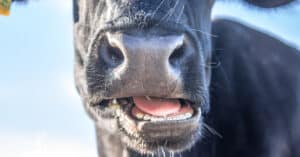The Complete History Of Bullfighting
@media (min-width: 481px) {
.mobile-top-content {
display: none;
}
}
#mobileTopContentCTACarouselControls { overflow: hidden; text-overflow: ellipsis; white-space: nowrap; }
.mobile-top-content .more { color: #fff; }
.mobile-top-content a { color: #fff; text-decoration: underline; }
.mobile-top-content a:hover { color: #fff; text-decoration: underline; }
@media (max-width: 480px) {
.mobile-top-content {
background-color: #06a10b;
color: #fff;
text-align: center;
/*height: 60px;
padding-top:5px;*/
font-size:80%;
/* display: block; */
margin: 0px -30px;
}
}
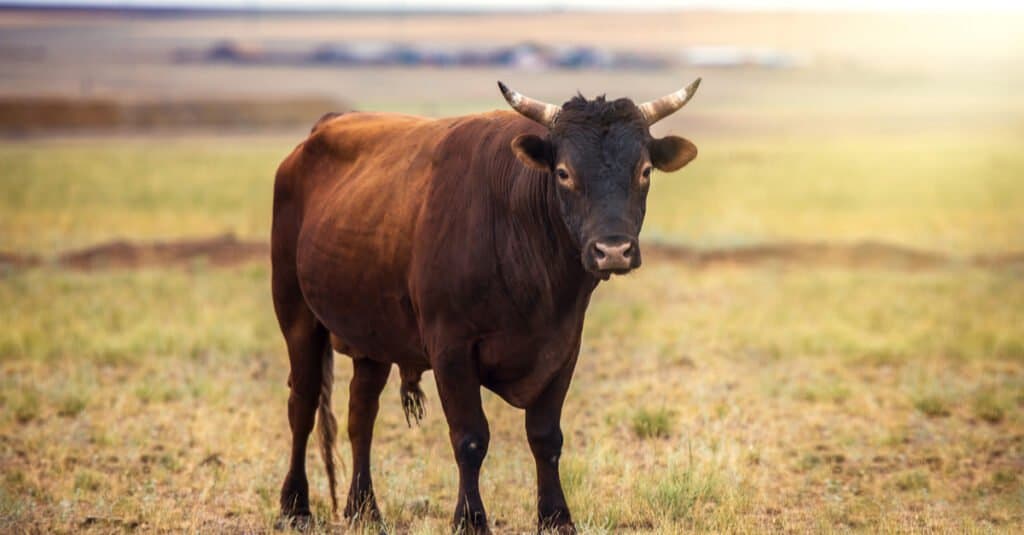
Berezovaya Nonna/Shutterstock.com
A look into the history of bullfighting shows that its formal beginnings had several precursors. For every historian who says that the spectacle’s roots are in Moorish Spain, another points to ancient bull cults in Mesopotamia or bull-taunting rituals that were common in medieval Spain. A “corrida de toros,” or formal bullfight, was held in 711 A.D. to honor the crowning of Alfonso VIII, King of Spain. Many believe this was the first “official” bullfight. However, many old traditions, customs, and cultures have influenced modern bullfighting. For example, some of the Minoan frescoes found at Knossos on Crete around 1500 BCE show people holding the bulls’ horns and vaulting over them.

Sergey Lyashenko/Shutterstock.com
Bullfighting: From 1000 – 17th Century
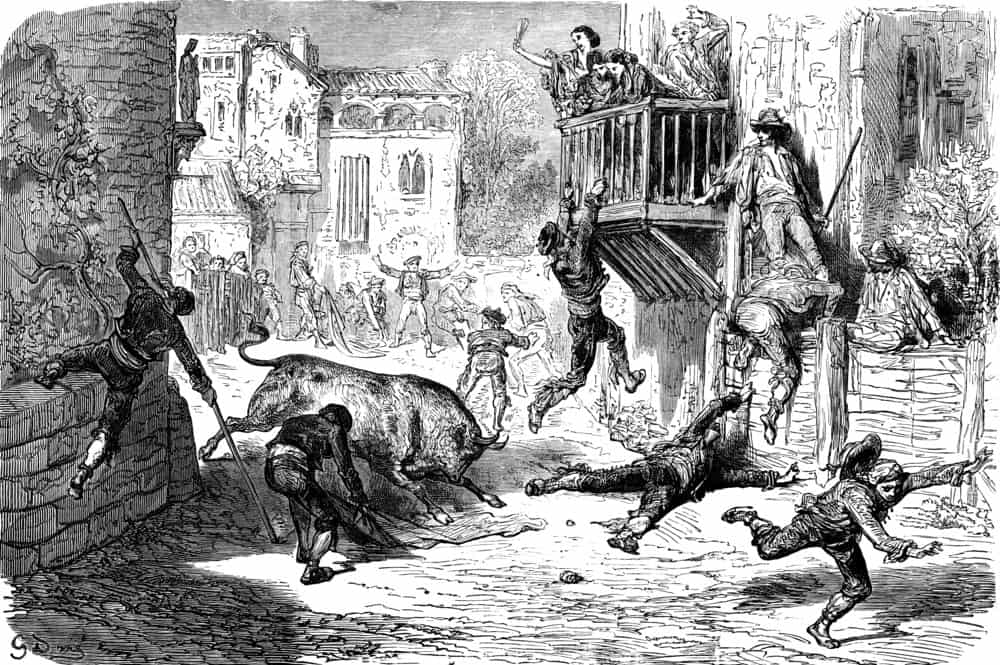
Morphart Creation/Shutterstock.com
Rodrigo Daz de Vivar (c. 1043–99) may have been the first Castilian to lance a bull from horseback in an enclosed arena. For more than 600 years, bullfighting elevated to the status of a cultural event. For example, after the Muslims were ousted from Spain in the 15th century, the aristocracy began to partake in bull-lancing tournaments. Charles V lanced a bull on Philip II’s birthday in 1516, when Austrians took over the throne. Pope Pius V kicked Christian lords out of the church because they enjoyed bullfights and wouldn’t bury anyone who died in the ring. During the reign of Philip IV (1621–1655), leg armor was made to protect bullfighters. To celebrate holy days, bullfighting is still conducted on Easter Sunday in some localities.
18th Century – The Rise Of Professional Bullfighting
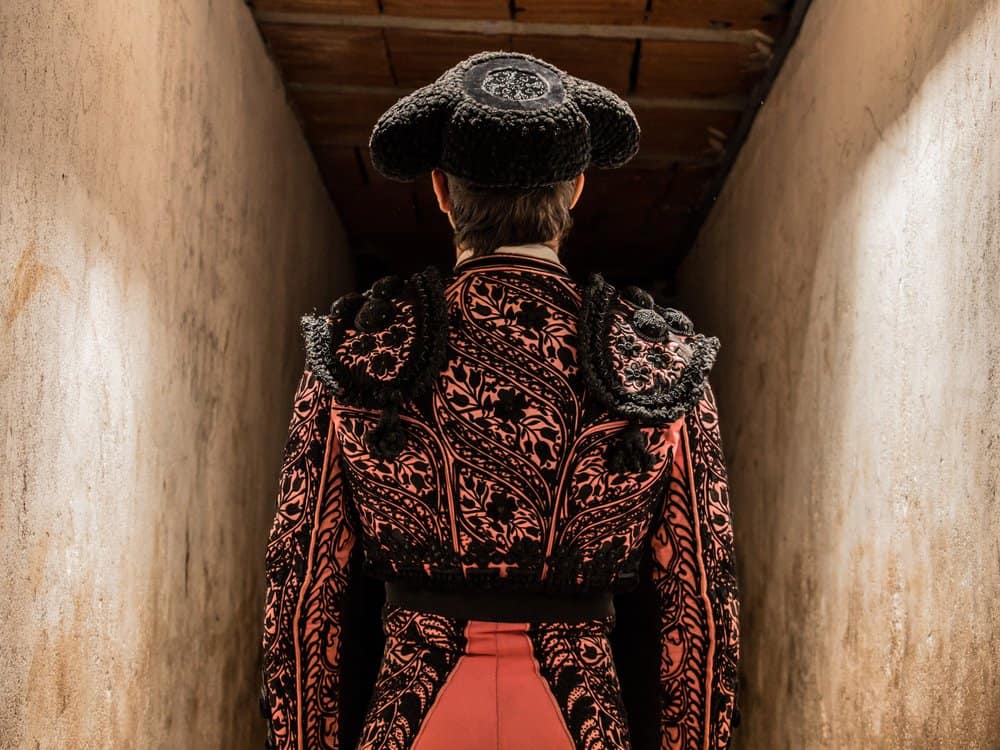
Irene Moreno Palomino/Shutterstock.com
As bullfighting grew popular in the 18th century, bulls were selected for certain features. Many European royal families vied to present the most ferocious. The lack of wild native bulls was one reason corridas failed in Italy and France. Joaqun Rodriguez Costillares, born in Sevilla in 1729, was a popular bullfighter in the early days of the profession. Costillares is known as the father of modern (on foot) bullfighting. He is said to have invented the matador tradition of wearing a costume with a lot of embroideries, and the volapié, which is the most common way to kill the bull.
Pedro Romero of Ronda, Andalusia, was Costillares’ rival. During his 28-year career, he killed 5,600 bulls and made the tiny cape worn in the final act of the bullfight popular. Romero was known for doing the “recibiendo,” in which the matador stands still and takes the bull on the sword as it charges. Early corridas were all about getting the kill, and the faster it could be done, the better. Over time, the matador’s ability to control the bull and perform the graceful arte de torero became just as important as his ability to kill the bull. This change was caused by another well-known bullfighter, Juan Belmonte’s career from 1910 to 1935.
Bullfighting: 1990’s – Present Day

Blink Panther/Shutterstock.com
Bullfighting is still a big show that draws a lot of people all over the Iberian Peninsula and Latin America. There are still dedicated English, French, and American fans who meet regularly to watch movies, study filmed corridas, and/or plan trips to see their favorite matadors perform in Mexico, Spain, France, and Latin America. In 1996, there were 40 million people who went to bullfights and bull fairs. In that year, 3,900 bulls were killed in 650 fights, and people who went to corridas spent over 160 billion pesetas (US$1.4 billion).
After the Canary Islands banned bullfighting in 1991, Catalonia did the same in July 2010. In 2016, the Spanish Constitutional Court took away the restriction. Even though the court ruled against it, Catalan politicians still vow to ban bullfighting. The fact that a region with such a long history of bullfighting would vote to discontinue it demonstrates how divided Spaniards are over the tradition.
The “Act” of Bullfighting Throughout History

David Pineda Svenske/Shutterstock.com
“A three-act tragedy” has long been used to describe bullfighting. The three acts are called tercios, and they include the matador slaying the bull, as well as picadors and banderilleros. Bullfights often last around 20 minutes from start to finish. In most bullfights, the last act culminates in a matador “conquering” the bull by slaughtering it with his sword.
Act One:
The first act begins with a bull being diverted into the arena and teased by a matador. The bull is then pursued by picadors (men on horses) who plunge spears into the bull’s back and neck muscles, preventing it from raising its head. To guarantee significant blood loss, the spears are twisted into the bull.
Act Two:
In the second act, the banderilleros (banderilla bullfighters) come out on foot and continue to distract the bull while stabbing it with banderillas, or colorful darts. After blood loss has weakened the bull, the banderilleros continue to circle him until he becomes dizzy and gives up the chase.
Act Three:
Act III features the matador. After a few exhausting charges from the dying animal, the matador tries to give the fatal blow with his sword. An executioner is called in if he misses and only causes further mutilation before killing the bull. Depending on the crowd’s reaction to the matador, the bull’s ears, tail, or hoof may be cut off and gifted to the matador as trophies.
After The Bullfight: Traditions Throughout History

Jan Wowra/Shutterstock.com
In the aftermath of a fight, have you ever wondered what happens to the bull? It doesn’t matter whether the bull is killed in the arena; their “usage” doesn’t end there.
Pardoned Bulls
Some bulls are “pardoned” if they exhibit good behavior throughout the bullfight. To ensure he lives out his remaining days in the pastures as a “seed bull,” the bull must first survive his injuries. Sadly, the injuries are almost always severe, and not every bull survives. Also, bulls are only used once in the corrida. In part, this is because the bull’s recall is excellent, making it dangerous for the matadors to perform their cape work in subsequent battles. Therefore, most bulls’ “bullfighting” careers are short-lived and do not end favorably.
Slain Bulls
When the bull is killed or dies, there are slaughterhouses that process the bull’s body. Some matadors even receive bull parts as “trophies” for their efforts. Even though the bull is commonly consumed after a fight, many people, even meat-eaters, consider it “unethical” to eat. Studies show that when an animal is under stress, it releases adrenaline, a hormone that metabolizes glycogen. As a result, less lactic acid is released after death. Lactic acid breaks down meat, changes its chemical structure, and many believe it enhances the flavor while also making the meat less tough. In addition, it has antibacterial characteristics, which help to keep the meat fresh longer. All of us may be animal rights supporters regardless of whether we eat meat if we don’t neglect the proper treatment of animals while they are alive.
The Evolution of Bullfighting Traditions
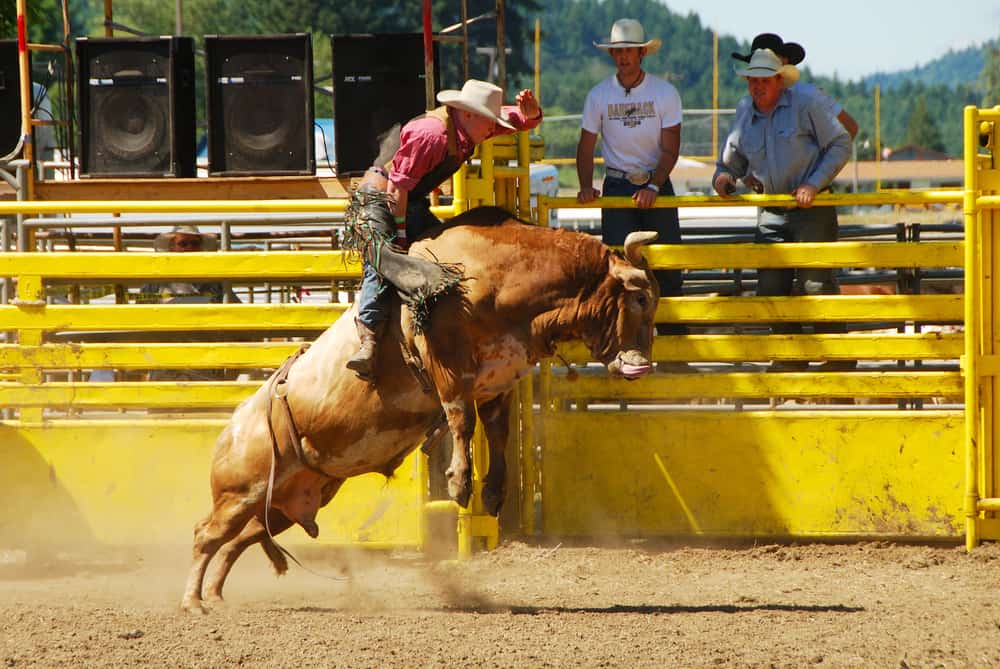
TFoxFoto/Shutterstock.com
Although most bullfights finish with the bull being “conquered” and slain, certain cultures do not agree with the spectacle of this. Below are a few examples of bullfighting traditions that have evolved to not involve the on-site slaying of the bull:
Bull Grabbing
In Rejoneo bullfighting in Portugal, the bull is not killed in the ring. Instead, he’s corralled and put down after. In these events, Forcados, or “bull grabbers,” force the animal to charge after being lanced. Then, one by one, they try to stop the rushing bull. But even though it’s meant to show off the speed and agility of the bull, this form of combat nonetheless causes the animal distress.
Bull Jumping
Bull jumping or leaping is another form of “bullfighting.” Fans of the “Go Big” Show may recall that season 2’s champion was Manu Lataste, a professional bull jumper. Celebrities like Rosario Dawson and Cody Rhodes admired his talent and gave him near-perfect scores throughout the season before awarding him the win. This shows that the tradition of tangoing with bulls is still alive and well. When we consider the morality of enforcing our will on an animal in such an antagonistic manner, it becomes an issue.
Bull Riding
Due to the size of the bulls, bull riding may appear less threatening to the bull. Cattle prods are frequently used to repeatedly shock bulls stuck in the bucking chute to improve their performance. Bucking straps and spurs can lead a bull to buck too hard out of discomfort, which can break the rider’s legs or back. Then, when bulls no longer give a wild ride, they are typically slaughtered. Vets and meat inspectors have reported damaged ribs, pierced lungs, hematomas, broken legs, and severed tracheas from rodeo animals.
Bull Aggression Throughout History

alberto clemares exposito/Shutterstock.com
Bulls are well-known for their aggressive nature and potential for harm. Although bulls tend to be more prone to aggression, this is because they have higher amounts of hormones, and are less socialized with humans. Otherwise, bulls are generally docile and spend most of their lives eating grass, sleeping, and playing. It is common knowledge that the bulls used in the bullfighting arena are bred and conditioned to be extremely aggressive.
Common Misconceptions
Bulls are well-known for their size and strength. But despite their apparent speed in an arena, they are still not as fast as their natural predators. The average speed of a herd of bulls is 15 to 20 miles per hour, whereas a single bull can reach 35 miles per hour. However, wolves, lions, hyenas, and leopards, all of which can outrun a bull, are common predators of bulls. Predators that they can’t outrun or fight usually kill them in packs. Also, a bull’s fight-or-flight range is around 20 feet. Bulls can’t hope to outrun predators in this area, therefore they’re more inclined to defend themselves by attacking.
It’s clear that a lot of people have the wrong idea about bull aggression. When it comes to bulls, it is a myth that they grow agitated at the sight of red. Bulls, like all other cattle, are insensitive to the color red. In reality, the bull becomes agitated as the matador whips his cape about. The little red cape usually appears at the end of the bullfight, when the bull has met its demise and the fight is over. Splatters of animal blood are one of the most harrowing parts of a bullfight, and the color helps to hide them.
Natural Evolution vs Conditioning
Aside from their natural development to defend themselves, bulls normally live peaceful lives, isolated from the rest of the herd. Is this a result of herding or natural evolution? When it comes to keeping a bull in good working order, it is well-known that bulls and cows are often separated at the end of the breeding season. This isolation prevents the breeding of any cows at an inopportune time of year. Additionally, separating the bulls into bullpens makes it easier for breeders to keep an eye on and feed them. Bulls do appear to prefer a lonely existence, far apart from the bustle of the cowherd where he serves his purpose of dispersing his seed.
Socialization Effects
Bulls that are routinely and early socialized are less likely to be hostile toward others, according to research. We may live in harmony with this wild beast if we respect its natural tendencies. Bulls that don’t spend as much time mingling with their fellow cattle are more likely to become violent in a crowded area. Now imagine purposefully isolating and antagonizing a naturally aggressive animal and forcing it to attack to defend itself. You now have the makings of a vengeful, misunderstood beast. Regardless of whether an animal is “aggressive in nature,” taunting it in or out of its native habitat is abusive behavior.
Bullfighting Today
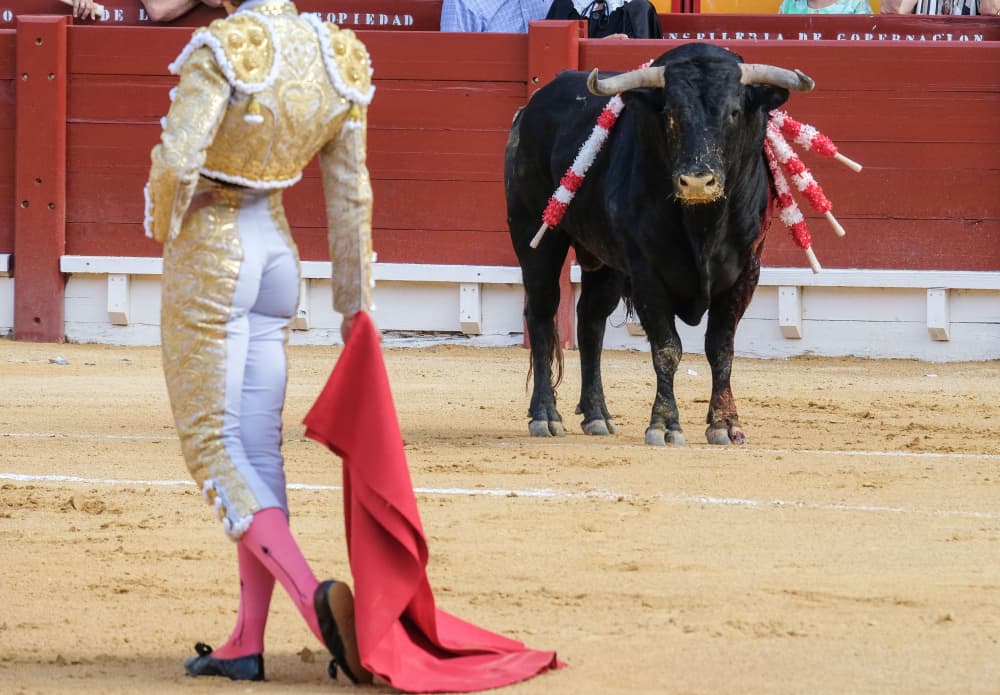
Axel Alvarez/Shutterstock.com
At the beginning of the 21st century, there were about 600 bullrings in Spain, ranging from the 20,000-capacity bullrings in Madrid and Barcelona to those in smaller towns that could only accommodate a few hundred spectators. The same dream of fame and money that drives fledgling athletes around the world is what drives many young bullfighters, male or female. Many who succeed are met with enormous wealth and admiration, as has been the case throughout bullfightings history.
Culturally limited depictions of bulls are common, particularly in North America. Many North Americans lack awareness about the bull to respectfully appreciate his grace, speed, and agility. Many people who travel to places with bullfighting events end up watching the spectacle for a culturally immersive experience. Thankfully, more people, particularly those rooted in Latin American and Spanish culture, are beginning to oppose bullfights.
Is Bullfighting a Dying Tradition?
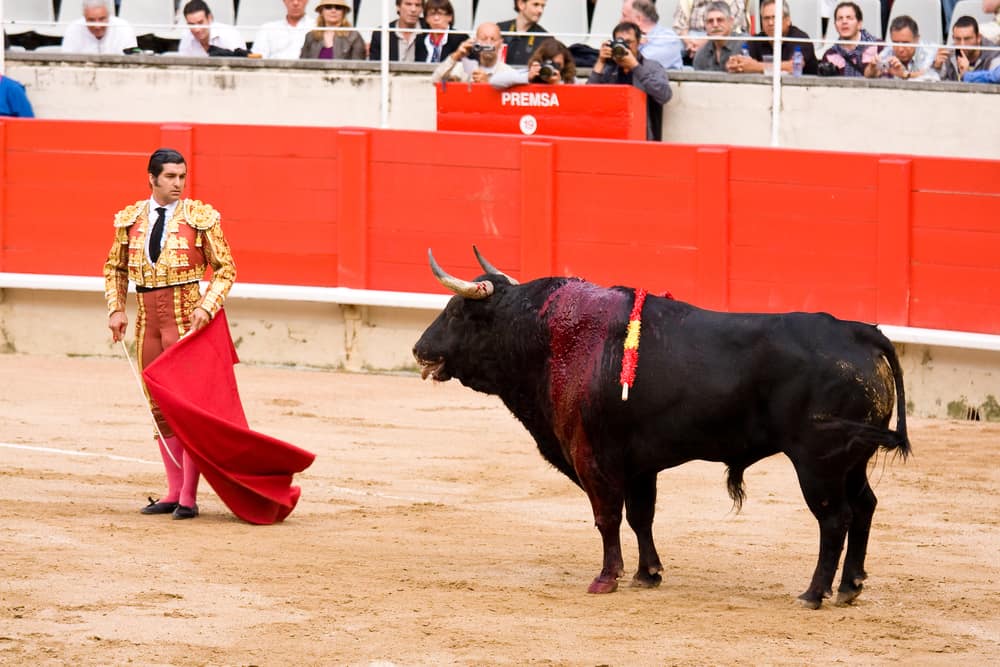
Natursports/Shutterstock.com
The history of bullfighting is a long and complex one. If history shows us anything, it’s that traditions are revered and sometimes run for centuries in many societies. Some customs are innocuous and can enrich people’s lives. Others are meant to fade away as time passes and man evolves. Bullfighting is a morally contentious matter. Bullfighting, like many “sports,” has its scandals. Bull drugging and bull gorging have all been reported as well as bribery. Sadly, there are many reports of bulls being malnourished, abused, imprisoned, and drugged before the “battle,” rendering them defenseless.
Inflicting pain or evoking negative emotions like fear or aggression are examples of animal abuse. Organizations like Humane Society International and PETA call bullfights highly orchestrated acts of animal cruelty. CAS International is an anti-bullfighting non-profit organization that aims to end bullfighting. Many countries that historically hosted the largest bullfighting events no longer allow it. Bullfighting is already illegal in Argentina, Canada, Cuba, Denmark, Italy, and the UK. Bullfighting is permitted in Spain, however, several cities within have banned it.
Bulls raised for bullfighting are naturally bred to fight. They aren’t raised to graze or procreate. Eating a bull after a fight does not make the act morally right. In fact, bulls do not typically yield desirable meat. This is because bulls have more muscle and less fat than steers and heifers, therefore their meat has less marbling. Many people have come to realize the underlying reality of bullfighting and have chosen to forego participating in any form of it. What you choose to support is entirely up to you. Bullfighting is a ritual that many people are still unfamiliar with. It is vital that all information be presented to educate the audience.
More from A-Z Animals
.more-snake-card-image { max-height:140px !important; }
@media (min-width: 481px) {
.mobile-top-content {
display: none;
}
}
#mobileTopContentCTACarouselControls { overflow: hidden; text-overflow: ellipsis; white-space: nowrap; }
.mobile-top-content .more { color: #fff; }
.mobile-top-content a { color: #fff; text-decoration: underline; }
.mobile-top-content a:hover { color: #fff; text-decoration: underline; }
@media (max-width: 480px) {
.mobile-top-content {
background-color: #06a10b;
color: #fff;
text-align: center;
/*height: 60px;
padding-top:5px;*/
font-size:80%;
/* display: block; */
margin: 0px -30px;
}
}

Berezovaya Nonna/Shutterstock.com
A look into the history of bullfighting shows that its formal beginnings had several precursors. For every historian who says that the spectacle’s roots are in Moorish Spain, another points to ancient bull cults in Mesopotamia or bull-taunting rituals that were common in medieval Spain. A “corrida de toros,” or formal bullfight, was held in 711 A.D. to honor the crowning of Alfonso VIII, King of Spain. Many believe this was the first “official” bullfight. However, many old traditions, customs, and cultures have influenced modern bullfighting. For example, some of the Minoan frescoes found at Knossos on Crete around 1500 BCE show people holding the bulls’ horns and vaulting over them.

Sergey Lyashenko/Shutterstock.com
Bullfighting: From 1000 – 17th Century

Morphart Creation/Shutterstock.com
Rodrigo Daz de Vivar (c. 1043–99) may have been the first Castilian to lance a bull from horseback in an enclosed arena. For more than 600 years, bullfighting elevated to the status of a cultural event. For example, after the Muslims were ousted from Spain in the 15th century, the aristocracy began to partake in bull-lancing tournaments. Charles V lanced a bull on Philip II’s birthday in 1516, when Austrians took over the throne. Pope Pius V kicked Christian lords out of the church because they enjoyed bullfights and wouldn’t bury anyone who died in the ring. During the reign of Philip IV (1621–1655), leg armor was made to protect bullfighters. To celebrate holy days, bullfighting is still conducted on Easter Sunday in some localities.
18th Century – The Rise Of Professional Bullfighting

Irene Moreno Palomino/Shutterstock.com
As bullfighting grew popular in the 18th century, bulls were selected for certain features. Many European royal families vied to present the most ferocious. The lack of wild native bulls was one reason corridas failed in Italy and France. Joaqun Rodriguez Costillares, born in Sevilla in 1729, was a popular bullfighter in the early days of the profession. Costillares is known as the father of modern (on foot) bullfighting. He is said to have invented the matador tradition of wearing a costume with a lot of embroideries, and the volapié, which is the most common way to kill the bull.
Pedro Romero of Ronda, Andalusia, was Costillares’ rival. During his 28-year career, he killed 5,600 bulls and made the tiny cape worn in the final act of the bullfight popular. Romero was known for doing the “recibiendo,” in which the matador stands still and takes the bull on the sword as it charges. Early corridas were all about getting the kill, and the faster it could be done, the better. Over time, the matador’s ability to control the bull and perform the graceful arte de torero became just as important as his ability to kill the bull. This change was caused by another well-known bullfighter, Juan Belmonte’s career from 1910 to 1935.
Bullfighting: 1990’s – Present Day

Blink Panther/Shutterstock.com
Bullfighting is still a big show that draws a lot of people all over the Iberian Peninsula and Latin America. There are still dedicated English, French, and American fans who meet regularly to watch movies, study filmed corridas, and/or plan trips to see their favorite matadors perform in Mexico, Spain, France, and Latin America. In 1996, there were 40 million people who went to bullfights and bull fairs. In that year, 3,900 bulls were killed in 650 fights, and people who went to corridas spent over 160 billion pesetas (US$1.4 billion).
After the Canary Islands banned bullfighting in 1991, Catalonia did the same in July 2010. In 2016, the Spanish Constitutional Court took away the restriction. Even though the court ruled against it, Catalan politicians still vow to ban bullfighting. The fact that a region with such a long history of bullfighting would vote to discontinue it demonstrates how divided Spaniards are over the tradition.
The “Act” of Bullfighting Throughout History

David Pineda Svenske/Shutterstock.com
“A three-act tragedy” has long been used to describe bullfighting. The three acts are called tercios, and they include the matador slaying the bull, as well as picadors and banderilleros. Bullfights often last around 20 minutes from start to finish. In most bullfights, the last act culminates in a matador “conquering” the bull by slaughtering it with his sword.
Act One:
The first act begins with a bull being diverted into the arena and teased by a matador. The bull is then pursued by picadors (men on horses) who plunge spears into the bull’s back and neck muscles, preventing it from raising its head. To guarantee significant blood loss, the spears are twisted into the bull.
Act Two:
In the second act, the banderilleros (banderilla bullfighters) come out on foot and continue to distract the bull while stabbing it with banderillas, or colorful darts. After blood loss has weakened the bull, the banderilleros continue to circle him until he becomes dizzy and gives up the chase.
Act Three:
Act III features the matador. After a few exhausting charges from the dying animal, the matador tries to give the fatal blow with his sword. An executioner is called in if he misses and only causes further mutilation before killing the bull. Depending on the crowd’s reaction to the matador, the bull’s ears, tail, or hoof may be cut off and gifted to the matador as trophies.
After The Bullfight: Traditions Throughout History

Jan Wowra/Shutterstock.com
In the aftermath of a fight, have you ever wondered what happens to the bull? It doesn’t matter whether the bull is killed in the arena; their “usage” doesn’t end there.
Pardoned Bulls
Some bulls are “pardoned” if they exhibit good behavior throughout the bullfight. To ensure he lives out his remaining days in the pastures as a “seed bull,” the bull must first survive his injuries. Sadly, the injuries are almost always severe, and not every bull survives. Also, bulls are only used once in the corrida. In part, this is because the bull’s recall is excellent, making it dangerous for the matadors to perform their cape work in subsequent battles. Therefore, most bulls’ “bullfighting” careers are short-lived and do not end favorably.
Slain Bulls
When the bull is killed or dies, there are slaughterhouses that process the bull’s body. Some matadors even receive bull parts as “trophies” for their efforts. Even though the bull is commonly consumed after a fight, many people, even meat-eaters, consider it “unethical” to eat. Studies show that when an animal is under stress, it releases adrenaline, a hormone that metabolizes glycogen. As a result, less lactic acid is released after death. Lactic acid breaks down meat, changes its chemical structure, and many believe it enhances the flavor while also making the meat less tough. In addition, it has antibacterial characteristics, which help to keep the meat fresh longer. All of us may be animal rights supporters regardless of whether we eat meat if we don’t neglect the proper treatment of animals while they are alive.
The Evolution of Bullfighting Traditions

TFoxFoto/Shutterstock.com
Although most bullfights finish with the bull being “conquered” and slain, certain cultures do not agree with the spectacle of this. Below are a few examples of bullfighting traditions that have evolved to not involve the on-site slaying of the bull:
Bull Grabbing
In Rejoneo bullfighting in Portugal, the bull is not killed in the ring. Instead, he’s corralled and put down after. In these events, Forcados, or “bull grabbers,” force the animal to charge after being lanced. Then, one by one, they try to stop the rushing bull. But even though it’s meant to show off the speed and agility of the bull, this form of combat nonetheless causes the animal distress.
Bull Jumping
Bull jumping or leaping is another form of “bullfighting.” Fans of the “Go Big” Show may recall that season 2’s champion was Manu Lataste, a professional bull jumper. Celebrities like Rosario Dawson and Cody Rhodes admired his talent and gave him near-perfect scores throughout the season before awarding him the win. This shows that the tradition of tangoing with bulls is still alive and well. When we consider the morality of enforcing our will on an animal in such an antagonistic manner, it becomes an issue.
Bull Riding
Due to the size of the bulls, bull riding may appear less threatening to the bull. Cattle prods are frequently used to repeatedly shock bulls stuck in the bucking chute to improve their performance. Bucking straps and spurs can lead a bull to buck too hard out of discomfort, which can break the rider’s legs or back. Then, when bulls no longer give a wild ride, they are typically slaughtered. Vets and meat inspectors have reported damaged ribs, pierced lungs, hematomas, broken legs, and severed tracheas from rodeo animals.
Bull Aggression Throughout History

alberto clemares exposito/Shutterstock.com
Bulls are well-known for their aggressive nature and potential for harm. Although bulls tend to be more prone to aggression, this is because they have higher amounts of hormones, and are less socialized with humans. Otherwise, bulls are generally docile and spend most of their lives eating grass, sleeping, and playing. It is common knowledge that the bulls used in the bullfighting arena are bred and conditioned to be extremely aggressive.
Common Misconceptions
Bulls are well-known for their size and strength. But despite their apparent speed in an arena, they are still not as fast as their natural predators. The average speed of a herd of bulls is 15 to 20 miles per hour, whereas a single bull can reach 35 miles per hour. However, wolves, lions, hyenas, and leopards, all of which can outrun a bull, are common predators of bulls. Predators that they can’t outrun or fight usually kill them in packs. Also, a bull’s fight-or-flight range is around 20 feet. Bulls can’t hope to outrun predators in this area, therefore they’re more inclined to defend themselves by attacking.
It’s clear that a lot of people have the wrong idea about bull aggression. When it comes to bulls, it is a myth that they grow agitated at the sight of red. Bulls, like all other cattle, are insensitive to the color red. In reality, the bull becomes agitated as the matador whips his cape about. The little red cape usually appears at the end of the bullfight, when the bull has met its demise and the fight is over. Splatters of animal blood are one of the most harrowing parts of a bullfight, and the color helps to hide them.
Natural Evolution vs Conditioning
Aside from their natural development to defend themselves, bulls normally live peaceful lives, isolated from the rest of the herd. Is this a result of herding or natural evolution? When it comes to keeping a bull in good working order, it is well-known that bulls and cows are often separated at the end of the breeding season. This isolation prevents the breeding of any cows at an inopportune time of year. Additionally, separating the bulls into bullpens makes it easier for breeders to keep an eye on and feed them. Bulls do appear to prefer a lonely existence, far apart from the bustle of the cowherd where he serves his purpose of dispersing his seed.
Socialization Effects
Bulls that are routinely and early socialized are less likely to be hostile toward others, according to research. We may live in harmony with this wild beast if we respect its natural tendencies. Bulls that don’t spend as much time mingling with their fellow cattle are more likely to become violent in a crowded area. Now imagine purposefully isolating and antagonizing a naturally aggressive animal and forcing it to attack to defend itself. You now have the makings of a vengeful, misunderstood beast. Regardless of whether an animal is “aggressive in nature,” taunting it in or out of its native habitat is abusive behavior.
Bullfighting Today

Axel Alvarez/Shutterstock.com
At the beginning of the 21st century, there were about 600 bullrings in Spain, ranging from the 20,000-capacity bullrings in Madrid and Barcelona to those in smaller towns that could only accommodate a few hundred spectators. The same dream of fame and money that drives fledgling athletes around the world is what drives many young bullfighters, male or female. Many who succeed are met with enormous wealth and admiration, as has been the case throughout bullfightings history.
Culturally limited depictions of bulls are common, particularly in North America. Many North Americans lack awareness about the bull to respectfully appreciate his grace, speed, and agility. Many people who travel to places with bullfighting events end up watching the spectacle for a culturally immersive experience. Thankfully, more people, particularly those rooted in Latin American and Spanish culture, are beginning to oppose bullfights.
Is Bullfighting a Dying Tradition?

Natursports/Shutterstock.com
The history of bullfighting is a long and complex one. If history shows us anything, it’s that traditions are revered and sometimes run for centuries in many societies. Some customs are innocuous and can enrich people’s lives. Others are meant to fade away as time passes and man evolves. Bullfighting is a morally contentious matter. Bullfighting, like many “sports,” has its scandals. Bull drugging and bull gorging have all been reported as well as bribery. Sadly, there are many reports of bulls being malnourished, abused, imprisoned, and drugged before the “battle,” rendering them defenseless.
Inflicting pain or evoking negative emotions like fear or aggression are examples of animal abuse. Organizations like Humane Society International and PETA call bullfights highly orchestrated acts of animal cruelty. CAS International is an anti-bullfighting non-profit organization that aims to end bullfighting. Many countries that historically hosted the largest bullfighting events no longer allow it. Bullfighting is already illegal in Argentina, Canada, Cuba, Denmark, Italy, and the UK. Bullfighting is permitted in Spain, however, several cities within have banned it.
Bulls raised for bullfighting are naturally bred to fight. They aren’t raised to graze or procreate. Eating a bull after a fight does not make the act morally right. In fact, bulls do not typically yield desirable meat. This is because bulls have more muscle and less fat than steers and heifers, therefore their meat has less marbling. Many people have come to realize the underlying reality of bullfighting and have chosen to forego participating in any form of it. What you choose to support is entirely up to you. Bullfighting is a ritual that many people are still unfamiliar with. It is vital that all information be presented to educate the audience.



